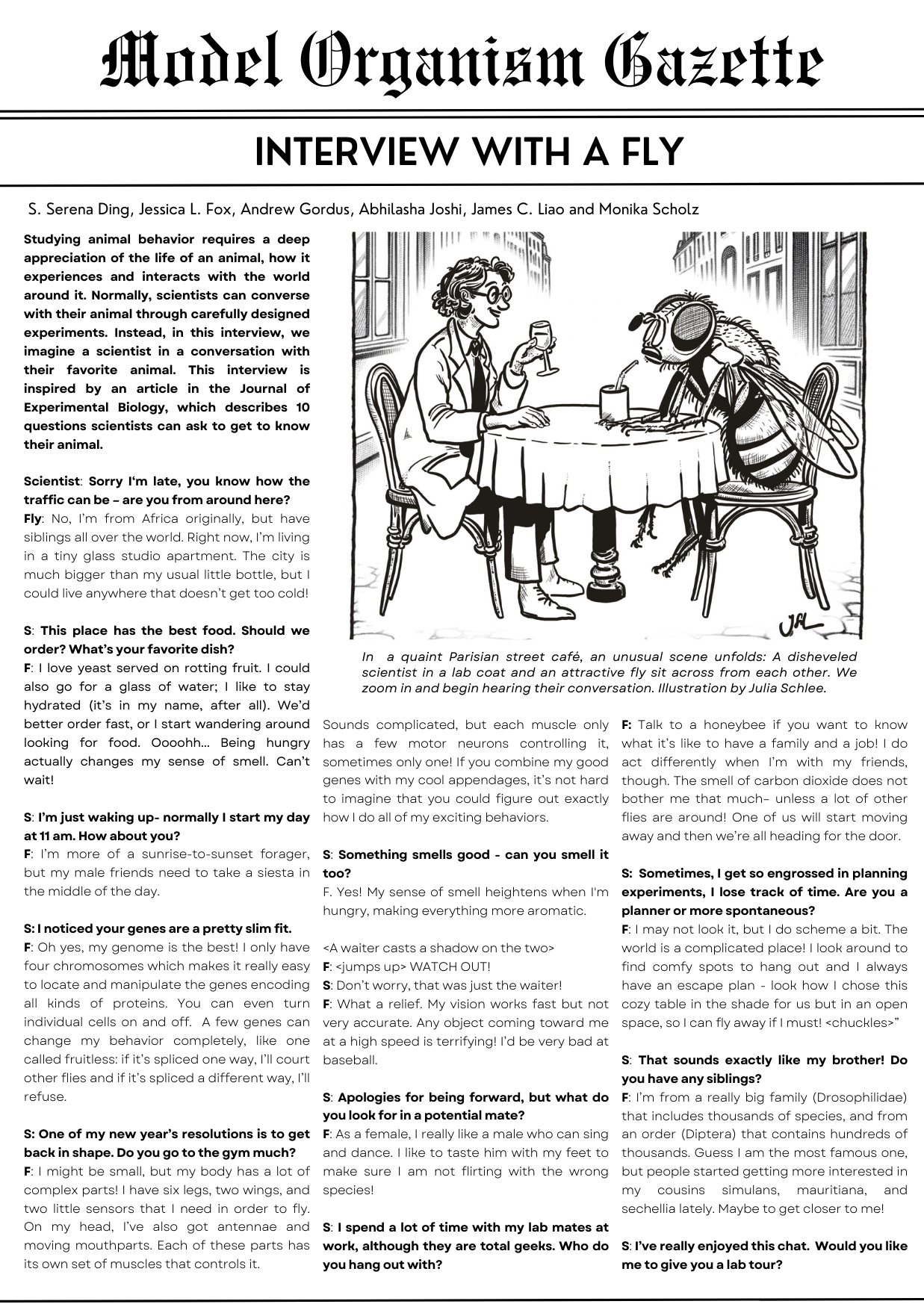Research News
An international team of experts in animal behavior and neurobiology advocates for rethinking behavioral research design. Recent advances in technical possibilities and our increasing knowledge about animal behaviors open up enormous opportunities to incorporate more realism into behavioral studies. The 10-step “guideline”, entertainingly written and published in the Journal of Experimental Biology, encourages researchers to (re-)engage with their animals’ ecology and lifestyle. Ultimately appreciating an animal holistically will bring us closer to our goal: Understanding animal behavior and how it is controlled by the nervous system.
While teaching a workshop on the Neurophysics of Motion, researchers from four American Universities and two German Max Planck Institutes, all working on different animals and problems, started discussing their dream for behavioral research. Together, they acknowledged that advanced technologies such as the “genetic scissor” tool CRISPR or AI-powered tracking of moving animals, and developments in the parallel area of neuroethology were game changers. Increasingly, researchers could expand their questions and incorporate more realistic scenarios into behavioral research. What began as a conversation led to a joint publication, encouraging all those who work with animals, even with classic model systems, to think outside the box and to benefit from approaches found in other areas of behavioral research.
Where are you from? Who are your friends and enemies? What are you looking for? And what are you thinking about right now? The proposed “guideline”, inspired by the column “to fall in love with anyone, do this”, a 36-questions-guide for falling in love by Mandy Len Catron (New York Times, 2015), consists of ten questions. Answering them helps to identify information necessary to bridge the gap between controlled laboratory settings and the natural habitat, and hopefully ignite a spark in researchers to better understand their animal – and to fall in love with it. Whether working with popular laboratory model organisms such as the fruit fly or the nematode C. elegans, web-building spiders or studying fish in the wild - the authors advocate for embracing a deeper understanding of animal behavior, for using the powerful new technologies to bring naturalistic contexts into the labs, or for venturing out of the lab. It is precisely these studies that are crucial for understanding complex behaviors. This publication is a delightful read for everyone in animal research.
How would your animal answer the ten questions? Get inspired by this interview with a fruit fly!

The authors
Monika Scholz, MPINB
S. Serena Ding, Max Planck Institute of Animal Behavior, Konstanz
Jessica L. Fox, Department of Biology, Case Western Reserve University, Cleveland
Andrew Gordus, Department of Biology, Johns Hopkins University, Baltimore
Abhilasha Joshi, Department of Physiology and Psychiatry, University of California
James C. Liao, Department of Biology, The Whitney Laboratory for Marine Bioscience, University of Florida